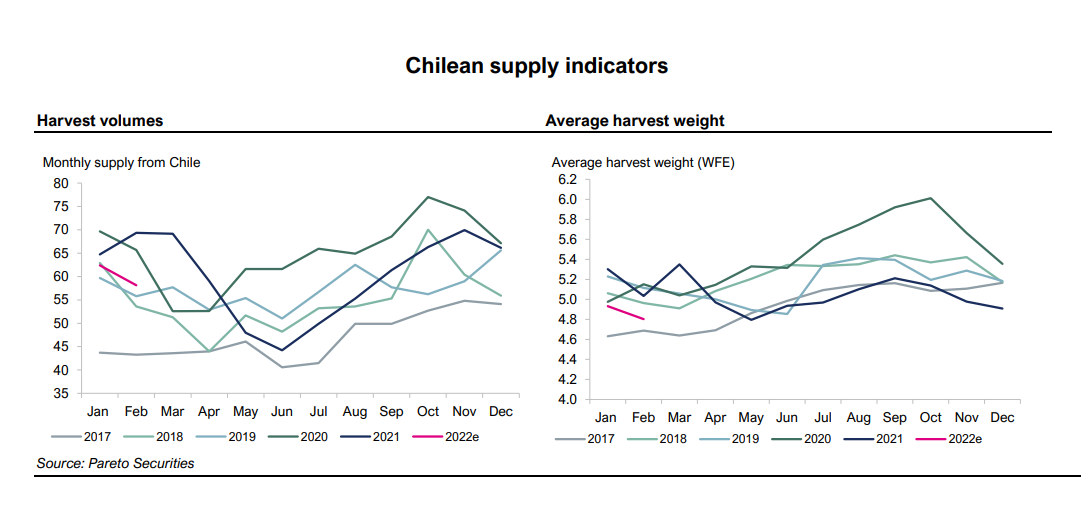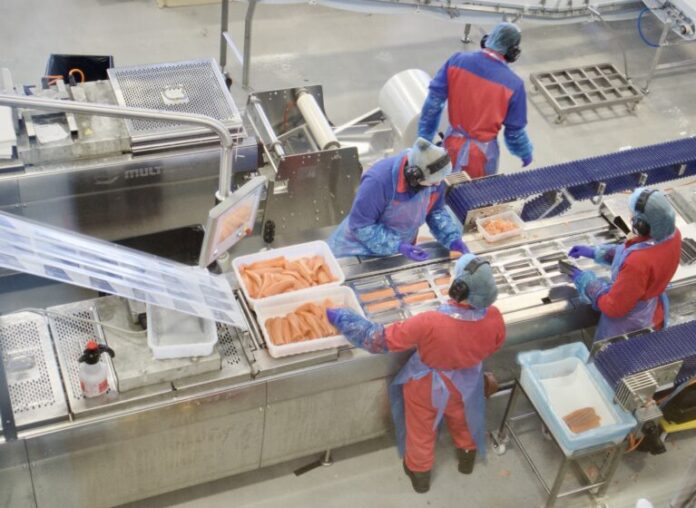Supply shortage leads to record high prices.
“We have paid 106, 107 and 108 kroner (EUR 11.1-11.3) for Tuesday packing and 1.50 kroner (EUR 0.2) lower for Wednesday, Thursday and Friday,” an exporter said discussing the salmon price in the middle of the Easter week. “It has dried up this week. Simply too little fish,” he said.
“No particular fish is available here. Somewhere between 100 and 110 kroner (EUR 10.5-11.5), depending on size, location and availability. There is a lot of low quality fish and relatively little that goes on the market,” an another exporter told SalmonBusiness.
“It will last for a while. If not so high prices, then there will be high prices for some time to come.”
Read also: The salmon price climbs further to a new peak
Reduced volume
According to the Norwegian Seafood Council, 359,804 tonnes of salmon (converted to round weight) have been exported from market leader Norway this year. This is a volume reduction of one and a half percent from the same period last year.
At the same time, the average price in the spot market has landed at €8.8 per kilo. The price level at Easter was almost €4 higher than the level at the same time in 2021.
The reduced supply of fish from Norway alone cannot explain the sharp rise in prices. There are also unconfirmed reports of reduced slaughter activity in Scotland and the Faroe Islands.

For the salmon industry’s second largest producer, Chile, however, the fall in the supply of fish is significantly greater than in Norway.
Slaughter volumes are far below the levels from 2020 and 2021, according to calculations made by Pareto Securities. The average weight of the fish, at 4.8 kilos in February, is the lowest recorded since 2017.
Chileans slaughter small fish, to profit from the record high prices. This in turn will result in less fish to feed – and slaughter – later in the year. It will be felt in the market balance.
Increased demand
However, salmon is not the only food that has become more expensive in 2022. The hashtag #foodinflation has become a frequently used term on social media.
A large number of food products have risen in price. Beef, for example, has become 16 percent more expensive in the past year, according to the New York Times.
U.S. food prices rose 8.8% in March from the prior year, the biggest annual increase since 1981. By item:
🥩 The price of beef rose 16%
🍞 The price of flour rose 14.2%
🍊 The price of citrus fruits rose 19.5%
🥛 The price of milk rose 13.3%https://t.co/XUKLRIPM03— The New York Times (@nytimes) April 12, 2022
Pareto Securities also points out that trout and cod, which can be considered closer to protein substitutes for salmon than beef, have also gained ground. Both cod and trout are currently traded at record high price levels.


